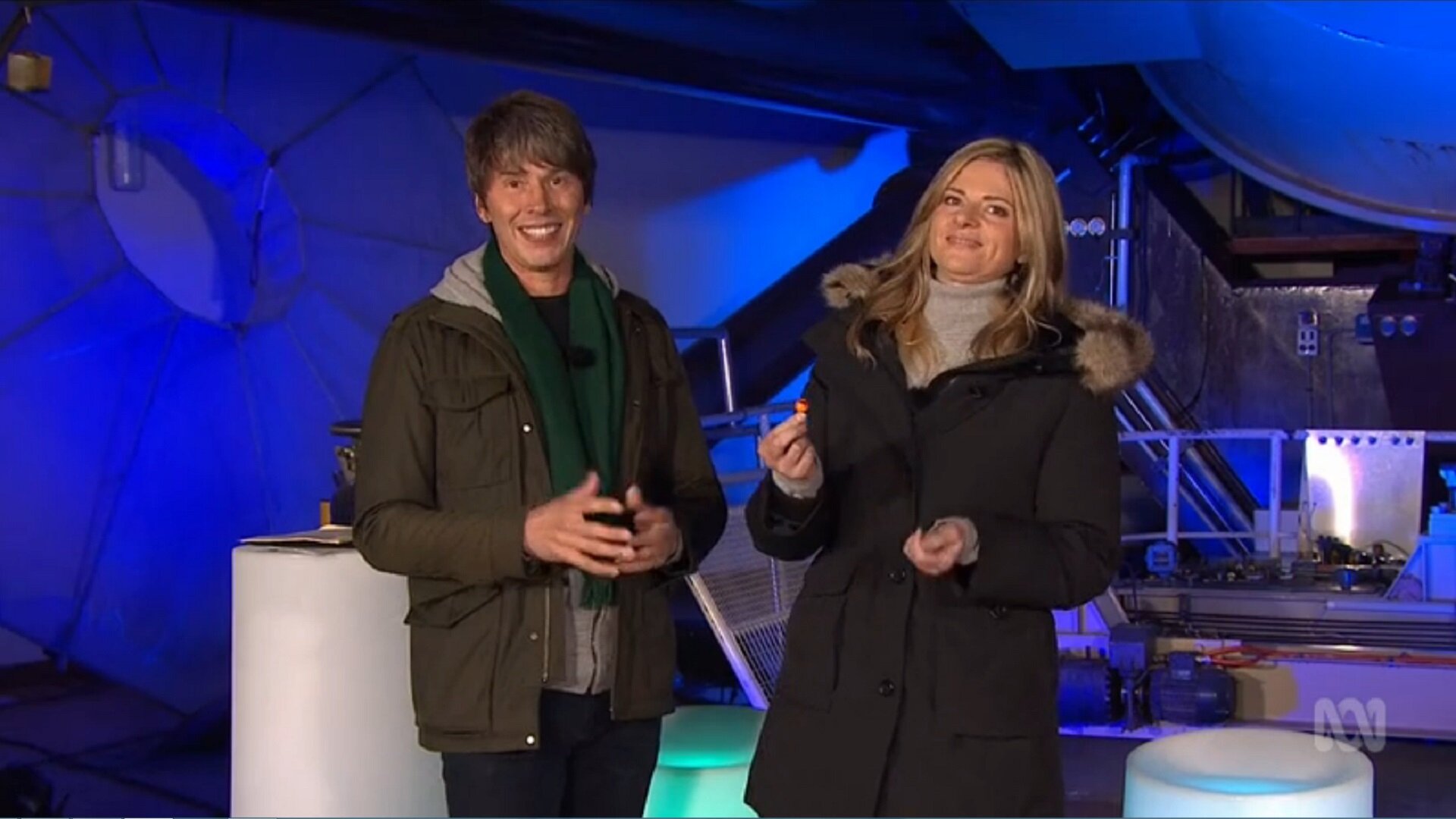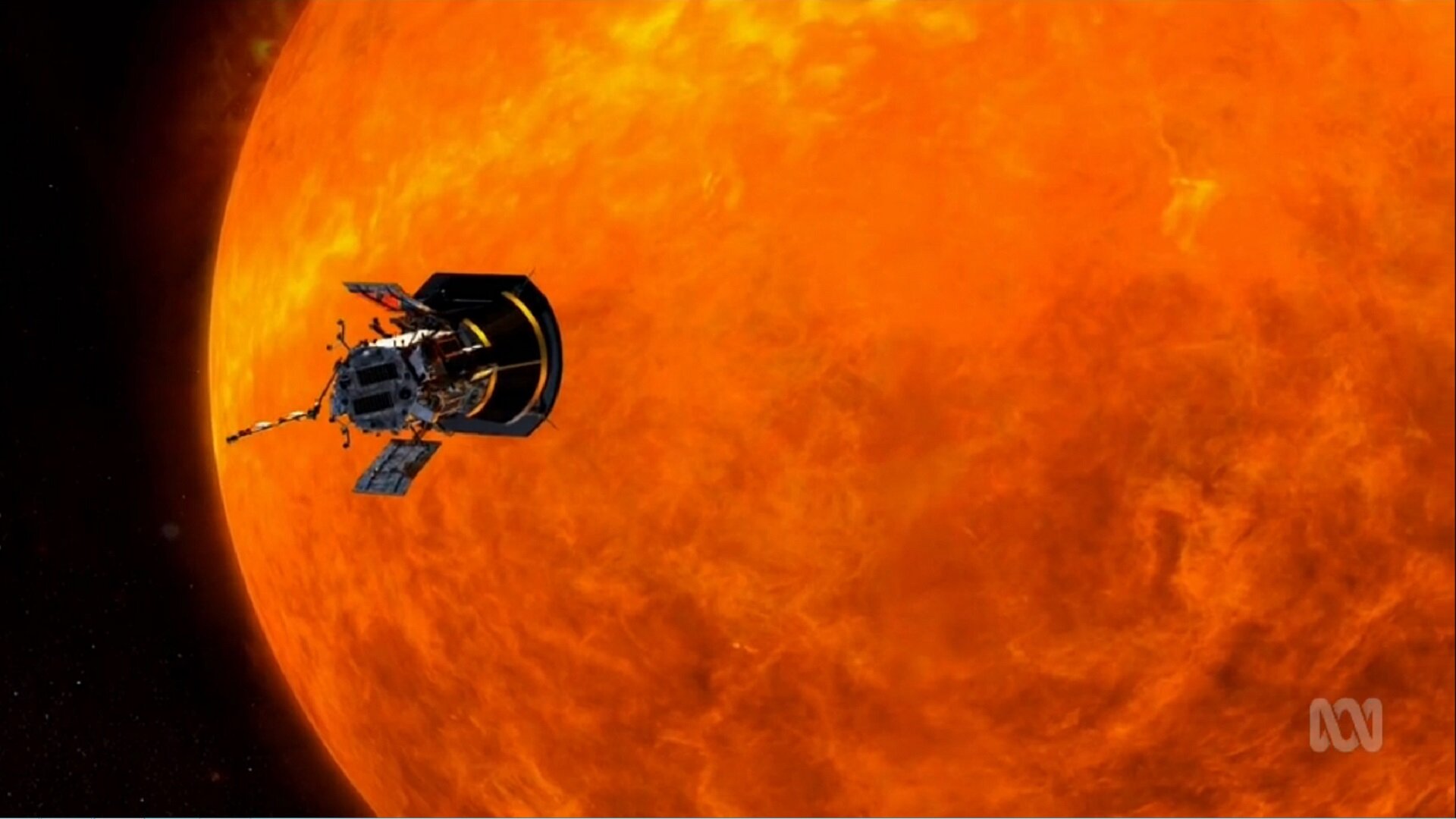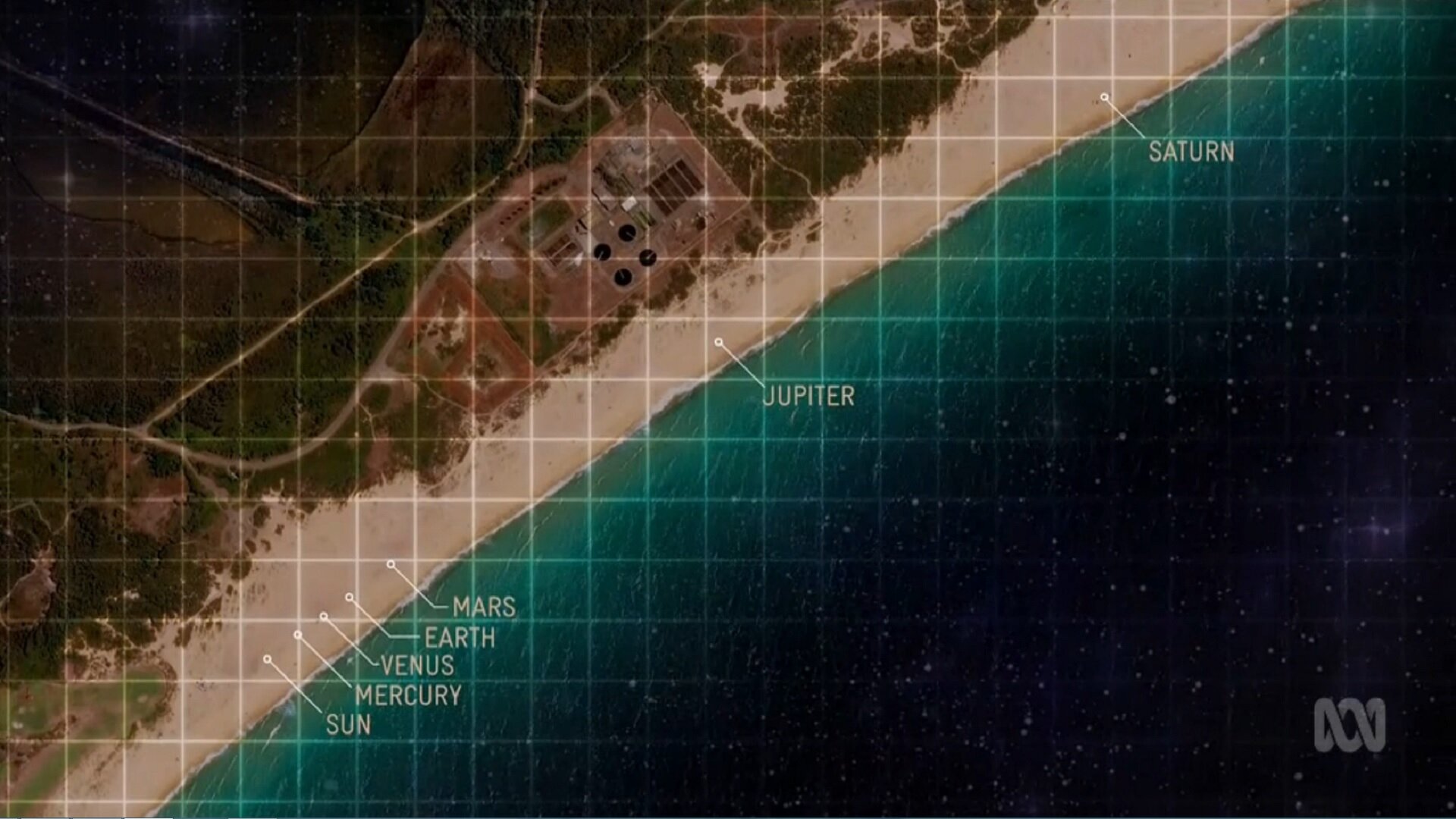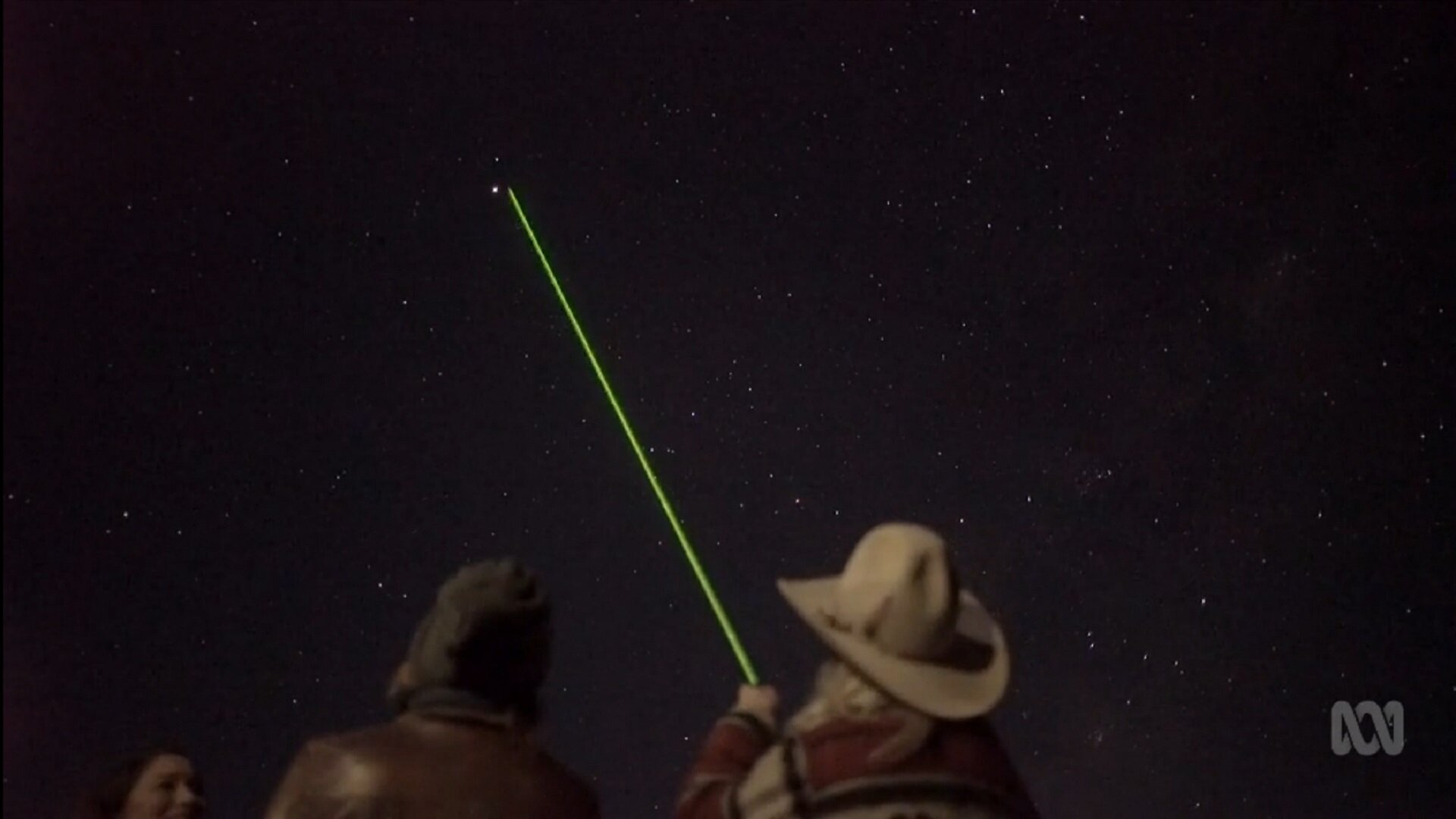Last updated May 31, 2018 at 1:01 pm
Catch up on Stargazing Live on the ABC with our wrap of Episode 1.

Huzzah! The best three hours of science TV in Australia has returned! Stargazing Live is back for another year, live from Siding Spring Observatory. With Brian Cox dropping knowledge bombs with Julia Zemiro, Lisa Harvey Smith blowing our minds, and Greg Quicke and Alan Duffy out and about discovering the cosmos, here’s what we learnt in the first episode, Episode 1.
The more things change, the more things stay the same
Everyone is cold.
With Siding Spring on top of a kilometre high mountain, the temperature tends to plummet at this time of year. And that was reflected in the appearance of the hosts – rugged up and shivering trying to stay warm.
While Julia and Brian got to go inside the telescope dome and escape the wind, Kumi Taguchi was closer resembling an icicle outside with Space Gandalf Greg Quicke. But even inside, our intrepid hosts weren’t getting much relief – to avoid damaging the telescope the dome is kept at low temperatures.
In expert level trolling by the producers, the cocktail of the day during “Back To Earth” was loaded with ice.
The Sun is the star of the show
Sorry Brian you’ve been usurped as star… by an actual star.
Beneath the searing hot raging atmosphere of our sun lies a turbulent surface, holding mysteries we are yet to comprehend. But, over the next few years we might start finding out some answers to how the lifeblood of our solar system works.
While winter has definitely hit, the rains in Australia are nothing compared to those on the Sun where it rains searing hot plasma. Raindrops the size of countries hurtle to the surface at 200,000 km/h.
There are even violent tornadoes reaching from the surface far into the atmosphere.
It might be these tornadoes which are the reason for one of the biggest mysteries of the Sun. Normally, the further you move from a heat source, the cooler it is – as you might know from a hot light or candle.
However on the sun, the Corona is around 300 times hotter than the surface, a paradox that has intrigued scientists for years. One potential explanation for this might be those solar tornadoes, could they transport heat upwards into the upper reaches of the atmosphere?
A second mystery of the Sun is its weird magnetic field. Different parts of the Sun rotate at different speeds, with the equator completing one rotation about every 25 days, while the poles take 35 days. The effect of this is a twisting, tangled magnetic field. And as these twists form it twists the plasma of the sun, and leads to the formation of the tornadoes.
Julia travelled to NASA’s Goddard Space Flight Center to see one of NASA’s most ambitious missions, which could find the answers to some of these mysteries.
The Parker Solar Probe will orbit ridiculously close to the sun, at its closest 6 million kilometres – close by Sun standards and closer than any probe before. In its 7 years above the surface, it will investigate the magnetic field of the Sun, teasing out what causes the charged particles and magnetic fields to dance and twist. This will hopefully give us insight into why the corona is so much hotter than the surface, and what causes the solar wind and its acceleration to monumental speeds as it leaves the sun.
Related: Fire your name into the Sun

Our Sun is big, but small
We might think our Sun is big, but Brian blew our minds with how truly small it is.
While 100 Earths would fit across its diameter and it would need 1 million Earths to fill its volume, our Sun is a mere pipsqueak next to the largest star we know of.
By sheer physical size, UY Scuti is the giant of the cosmos. It might only be 30 times the sun’s mass, but its diameter is 1700 times that of our sun – around 2.4 billion kilometres across. While Julia held a tiny model Sun between her fingers, a scale model UY Scuti would have filled the telescope dome.
Closer to home is another red giant star – Betelgeuse in the constellation of Orion. But even that is only half the size of UY Scuti. However, Betelgeuse’s size is famously variable, fluctuating between 550 to 920 times our Sun’s diameter.
Our Sun isn’t the smallest though. While it might not compete with the red giants of Betelgeuse and UY Scuti, it isn’t the little kid on the block. The smallest stars are neutron stars, the leftover remnants of a star which has died and exploded in a supernova.
Neutron stars are incredibly dense, pulled together by huge gravitational forces, and are typically about the size of a city – about 30km across.

A demonstration of the size of Betelgeuse – if Brian is in the centre, Julia is at the edge, holding the Sun in her fingers for comparison.
Alan Duffy went searching for life live
The astronomer with the best accent on TV, Alan Duffy, was at Parkes radio telescope (where it looked much warmer) looking for life.
He found it in fellow astronomer Danny Price, who uses the dish to search for intelligent life on other planets.
Working as part of the Breakthrough Listen project, he is part of an effort to survey the closest million stars to Earth, using radio telescopes to listen for any signals which might emanate from intelligent civilisation – basically any strange signals.
The astronomy dream team turned the dish towards Wolf 1061C, which had never before been checked for signals of intelligent life.
Cue Brian Cox scrambling for the UN protocol for the detection of extra terrestrial life, just in case they did detect something, which was printed out on some crinkled paper (they’re obviously stretching the production budget).
Wolf 1061C was a target on interest as it is around 4 times the mass of Earth, and a climate somewhere between Earth and Mars – around -50 degrees C, or about as cold as the team at Siding Spring.
They turned on the speaker hoping to hear some kind of strange signal, literally anything that didn’t sound normal. And they heard…
No talking
No Beyonce
No sounds of life.
They probably heard Brian hundreds of kilometres away yelling “I TOLD YOU SO.”
They’ll keep searching.
Lisa Harvey Smith was hanging out at the beach
Like all good English people, Lisa was at the beach. But she used the stretch of sand to build a 1-billionth scale model of the solar system.
It’s big y’all.
Her model of Earth was 12.4 mm across, but was 150 metres away from her model Sun. A tiny planet, a long way away.
But by the time she needed to get to Jupiter she was in her ute driving along the beach, and by the time she got to Saturn she was 1.5 km away from her starting spot.
Uranus – 3 km away. By this point we’d swapped to satellite views of the beach to be able to see it all.
But then she continued to Pluto – over 6 km from the Sun.
You got the sense of how massive the solar system is, and how close we have to be to the Sun to support life.

Space Gandalf makes dreams come true
Tim Minchin was on hand, and admitted while he loved the intellectual pursuit of astronomy, he’d never actually looked down a telescope and always wanted to see a planet.
Enter everyone’s favourite bearded stargazer, Greg Quicke.
With trusty telescope he made Tim’s dream come true, showing him Jupiter and its moons.
Is there anything he can’t do? Yes, actually – the great red spot was on the opposite side of the planet, so he couldn’t show Tim that.
But he can show you exactly where planets are at any time. The ecliptic is a line you can use to find the planets of our solar system – draw a line between the point where the sun dropped below the horizon to the moon, then keep going all the way across the sky. The planets will be on that line.

More ways than ever to get involved
This year has more ways than ever before to get involved in the show. As always, you can submit questions and photographs for the programme.
You can check out a Stargazing party near you and be part of the attempt to break the record for the most people stargazing at any one time.
Related: ABC Stargazing Live and ANU to break a world record
And, there is a project similar to last year’s exoplanet discovery project, but instead searching for Supernovae. Head to supernovasighting.org and help researchers by searching through images taken by SkyMapper, a telescope surveying galaxies in our sky.
By searching for changes in galaxy images you might be able to identify a supernova in progress. Any potential hits will be immediately followed up by telescopes all around the world, which will hunt down any positives and try to catch a supernova in action.
Already over 600,000 image classifications have been made.
Will you be elevated into worldwide fame, like this legend last year?

Hey it’s that guy that found the exoplanet!
Episode 2 is tonight on ABC1 and iView.


























































































































































































































































